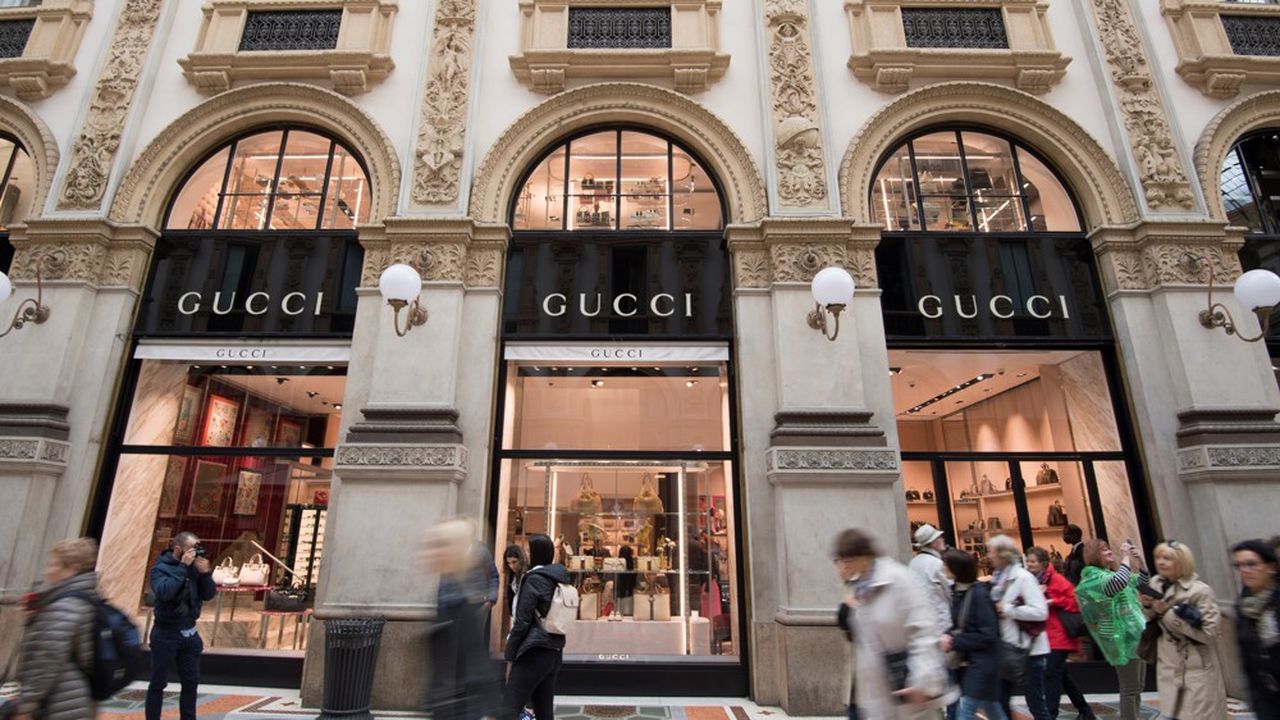Luxury Giants: LVMH, Kering, and the Gucci Factor
In the world of luxury fashion, Gucci stands out with its unparalleled aura of prestige and opulence. Established in 1921 by Guccio Gucci in Florence, Italy, the brand swiftly rose to prominence, embodying the essence of Italian craftsmanship and sophistication. For decades, Gucci defined high fashion, its double-G logo becoming a symbol of luxury coveted by the elite worldwide. LVMH (Moët Hennessy Louis Vuitton) and Kering stand as towering pillars of innovation and strategic vision. Each has meticulously crafted a distinct trajectory to global prominence: LVMH through bold acquisitions and expansive brand management, Kering via a focused approach on luxury and sustainability. At the core of their narratives lies Gucci, a brand emblematic of both triumph and adversity in the fiercely competitive world of haute couture. However, the story of Gucci is not merely one of uninterrupted success; it is also a cautionary tale of how even the most venerable fashion houses can falter under the weight of mismanagement, changing market dynamics, and shifting consumer preferences.
The Rise of Gucci – Luxury Giants
Gucci’s ascent to the upper echelons of the fashion industry was marked by a combination of visionary leadership, impeccable craftsmanship, and strategic marketing. Guccio Gucci, a master leather craftsman, initially focused on creating exquisite leather goods, particularly horse saddles, harnesses, and bags. His dedication to quality and attention to detail soon earned Gucci a reputation for excellence, attracting a discerning clientele that included aristocrats, celebrities, and socialites.
The 1950s and 1960s witnessed Gucci’s transformation into a global fashion powerhouse under the stewardship of Guccio Gucci’s sons – Aldo, Vasco, and Rodolfo. The brand expanded its product line to include iconic accessories such as the bamboo-handled bag and the Flora silk scarf, both of which became enduring symbols of Gucci’s luxury and sophistication. By cultivating an image of exclusivity and catering to the affluent elite, Gucci solidified its position as one of the foremost luxury brands in the world.
The Zenith of Luxury – Luxury Giants
The 1970s and 1980s marked Gucci’s zenith, characterized by creative innovation and international expansion. Under the creative direction of Tom Ford in the 1990s, Gucci underwent a spectacular rejuvenation, blending daring sensuality with impeccable tailoring to create collections that captivated both critics and consumers alike. Ford’s provocative designs, epitomized by sleek silhouettes, bold prints, and sensual fabrics, redefined modern luxury and propelled Gucci to unprecedented heights of popularity and profitability.
Signs of Trouble – Luxury Giants
However, Gucci’s trajectory was not immune to the internal strife and external pressures that often afflict fashion empires. In the late 1990s and early 2000s, the brand faced challenges stemming from family disputes, counterfeit proliferation, and a dilution of its brand identity. The discord among the Gucci family members, particularly the bitter feud between Maurizio Gucci’s widow, Patrizia Reggiani, and Maurizio’s ex-wife, resulted in a destabilizing power struggle that threatened to undermine the brand’s integrity and reputation.
Simultaneously, Gucci’s once-exclusively high-end image became increasingly compromised by the widespread availability of counterfeit Gucci products in global markets. The proliferation of counterfeit goods not only eroded Gucci’s brand equity but also posed a significant challenge to its profitability and long-term sustainability.
The Revival and Reinvention – Luxury Giants
To counter these challenges, Gucci underwent a series of strategic initiatives aimed at revitalizing its brand image and restoring its exclusivity. Central to this effort was the appointment of creative visionary Alessandro Michele as the brand’s creative director in 2015. Michele’s appointment marked a departure from the provocative aesthetic championed by Tom Ford, opting instead for a whimsical and eclectic design ethos that embraced gender fluidity, maximalism, and romanticism.
Michele’s unconventional approach to fashion design breathed new life into Gucci, captivating a younger demographic while simultaneously appealing to the brand’s loyal customer base. His debut collection, characterized by vintage-inspired silhouettes, eccentric prints, and eclectic accessories, received widespread acclaim and reinvigorated Gucci’s relevance in the competitive landscape of luxury fashion. Since January 2023, Sabato de Sarno has held the position of creative director at Gucci.
The Downfall
In 2023, Gucci experienced financial difficulties with its revenue totaling €9.9 billion, marking a 6% decrease compared to the previous year. This decline was attributed in part to reduced sales from both their directly operated retail network and wholesale revenue. Kering’s primary brand, Gucci, serves as the cornerstone of half the company’s revenues. The brand experienced a 14% decline in sales on a reported basis, falling from $2.7 billion in the corresponding period last year to $2.3 billion this year. Additionally, revenues saw a 7% decrease on a comparable basis.
Despite its efforts to reinvent itself under Michele’s creative leadership, Gucci encountered setbacks that threatened to tarnish its reputation and erode consumer confidence. One of the most notable controversies involved accusations of cultural insensitivity and racial discrimination in its marketing campaigns and product designs. Critics accused Gucci of appropriating cultural symbols and perpetuating harmful stereotypes, prompting widespread backlash and calls for accountability within the fashion industry.
The unusual profit warning anticipates a 10% decline in overall group revenues during the first three months of 2024 on a comparable basis. This places the fashion house in stark contrast to other luxury brands like LVMH and Hermes, which have demonstrated resilience against economic challenges.
Moreover, Gucci’s pricing strategy came under scrutiny as the brand increasingly relied on discounting and promotional activities to drive sales amidst economic uncertainties and shifting consumer behavior. The proliferation of online luxury resale platforms further exacerbated the issue, enabling consumers to purchase discounted Gucci merchandise, thereby undermining the brand’s perceived exclusivity and prestige.
The Impact of COVID-19
The global COVID-19 pandemic posed unprecedented challenges for the luxury fashion sector, including Gucci. The temporary closure of retail stores, disruptions in the supply chain, and shifts in consumer spending habits forced Gucci to recalibrate its business operations and adapt to a rapidly evolving retail landscape. The pandemic underscored the importance of digital transformation and omnichannel strategies, prompting Gucci to accelerate its investments in e-commerce and virtual shopping experiences to meet the demands of a digitally savvy consumer base.
Is kenza layli real ? World’s First Miss AI | Maya (mayathevoice.com)
The Rise of LVMH
the trajectories of Kering and LVMH (Moët Hennessy Louis Vuitton) have diverged significantly over the years, despite their similar beginnings and initial size. Both companies originated in France and initially focused on luxury goods, positioning themselves as key players in the global fashion and luxury markets. However, their paths to growth and their strategies in navigating the complexities of the luxury industry have shaped their current standings.
LVMH, under the visionary leadership of Bernard Arnault, embarked on a strategic journey of expansion and diversification that propelled the company to unprecedented heights. Arnault, known for his astute deal-making abilities and strategic foresight, orchestrated a series of acquisitions that transformed LVMH into a conglomerate encompassing a diverse portfolio of prestigious brands across multiple sectors.
Strategic Acquisitions and Diversification
LVMH’s strategy under Bernard Arnault was characterized by bold acquisitions of iconic brands that complemented its existing portfolio and expanded its market reach. Key acquisitions included:
- Moët & Chandon and Hennessy: The merger of these two historic champagne and cognac houses laid the foundation for the company’s luxury beverages division.
- Louis Vuitton: Acquiring a majority stake in Louis Vuitton in 1989 marked a pivotal moment, bringing the iconic French fashion house under LVMH’s umbrella and solidifying its position in the luxury fashion sector.
- Christian Dior: LVMH gained control of Christian Dior in 2017, further enhancing its dominance in the fashion and beauty markets.
Brand Management and Innovation
Beyond acquisitions, LVMH focused on nurturing and expanding its existing brands while fostering a culture of innovation and creativity. The conglomerate’s commitment to craftsmanship, heritage, and innovation resonated with consumers globally, reinforcing its status as a leader in the luxury industry.
Global Expansion and Retail Presence
LVMH capitalized on opportunities in emerging markets and leveraged its global distribution network to expand its footprint worldwide. The company’s retail strategy emphasized experiential luxury, with flagship stores in major cities becoming destinations for affluent consumers seeking exclusive products and personalized service.
Digital Transformation and Sustainability
In recent years, LVMH has prioritized digital transformation and sustainability initiatives to meet the evolving expectations of consumers and stakeholders. Investments in e-commerce, digital marketing, and sustainable practices have positioned LVMH as a forward-thinking leader in the luxury sector, adapting to the digital age while maintaining its commitment to craftsmanship and quality.
Brand Management and Innovation
Beyond acquisitions, LVMH focused on nurturing and expanding its existing brands while fostering a culture of innovation and creativity. The conglomerate’s commitment to craftsmanship, heritage, and innovation resonated with consumers globally, reinforcing its status as a leader in the luxury industry.
Global Expansion and Retail Presence
LVMH capitalized on opportunities in emerging markets and leveraged its global distribution network to expand its footprint worldwide. The company’s retail strategy emphasized experiential luxury, with flagship stores in major cities becoming destinations for affluent consumers seeking exclusive products and personalized service.
Digital Transformation and Sustainability
In recent years, LVMH has prioritized digital transformation and sustainability initiatives to meet the evolving expectations of consumers and stakeholders. Investments in e-commerce, digital marketing, and sustainable practices have positioned LVMH as a forward-thinking leader in the luxury sector, adapting to the digital age while maintaining its commitment to craftsmanship and quality.
Lessons Learned and Future Prospects
As Gucci navigates the complexities of the modern fashion industry, the brand must learn from its past mistakes and leverage its rich heritage to forge a sustainable path forward. Central to this endeavor is the preservation of Gucci’s core values of craftsmanship, innovation, and inclusivity, while simultaneously embracing digital innovation and environmental sustainability.
Gucci’s ability to reconcile tradition with innovation, exclusivity with accessibility, will determine its future success in an increasingly competitive and rapidly changing global marketplace. By fostering a culture of creativity, diversity, and ethical responsibility, Gucci can redefine modern luxury for a new generation of discerning consumers who value authenticity, transparency, and social responsibility.
LVMH and Kering have followed distinct trajectories in the luxury industry, shaped by their respective strategies, leadership styles, and market positioning. LVMH’s expansive growth through strategic acquisitions, brand management, and global expansion has propelled its market value to extraordinary heights, reflecting its status as a dominant force in luxury goods.
Conversely, Kering’s focused approach on luxury brands and sustainability has positioned it as a leader in creative innovation and ethical practices within the industry. Both companies exemplify different paths to success in the competitive landscape of luxury fashion and goods, demonstrating the importance of strategic vision, brand management, and adaptation to evolving consumer preferences and global dynamics.
In conclusion, Gucci’s journey from high fashion to the discount rack serves as a poignant reminder of the fragility of brand equity and the imperative of strategic foresight in navigating the complexities of the fashion industry. As Gucci continues to evolve and adapt to the demands of a dynamic marketplace, its ability to innovate, inspire, and resonate with consumers will ultimately determine its enduring legacy in the annals of fashion history.



